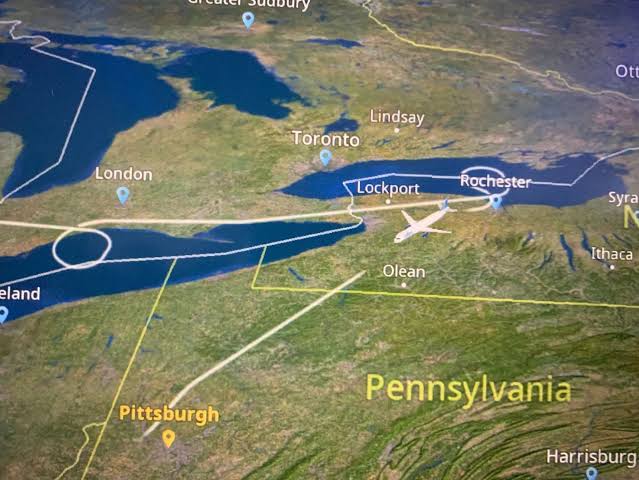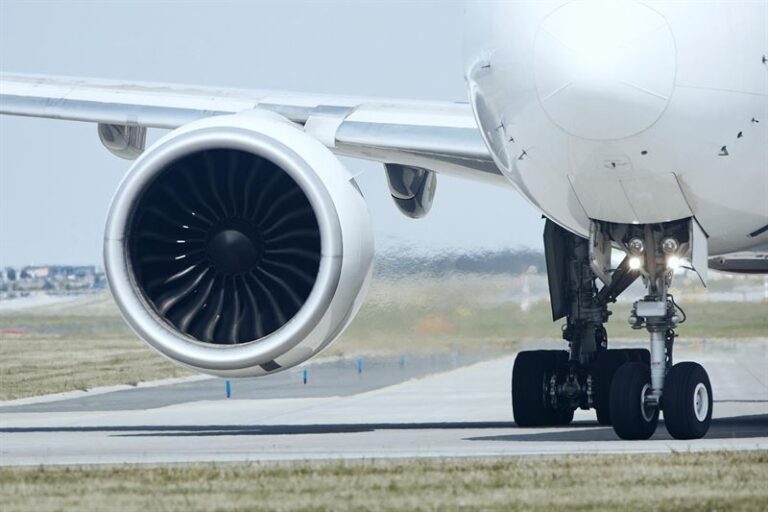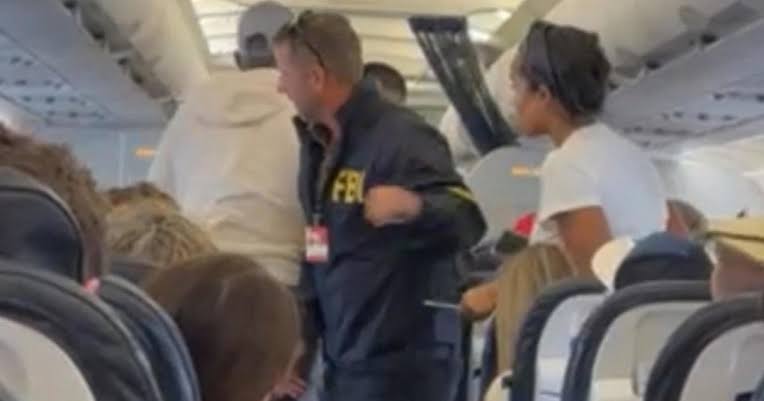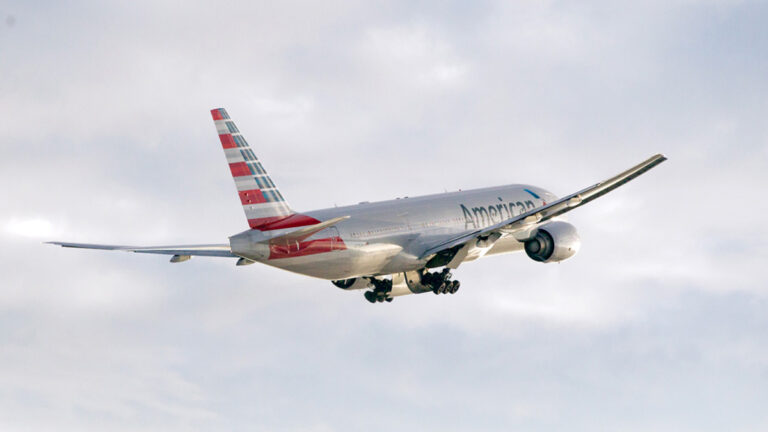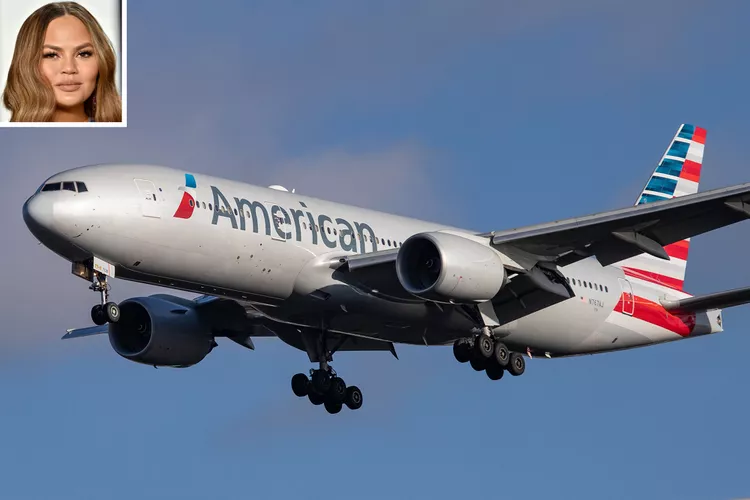I survived three airline disasters in one day. This is what happened on my terrifying journey across the U.S.
The Auntie Anne’s, which had been so delicious a half hour earlier, began to make its way towards the emergency exit of my esophagus. I reached for the “for motion discomfort” bag in the pocket in front of me and hoped it wouldn’t come to this. All the while, I watched the in-flight map on my screen trying to mentally will the plane’s progress to Logan Airport. But we were now beyond Boston and well over the Atlantic Ocean, heading directly towards Nantucket.
I turned to Ron and said, “We’re about to make emergency landing #3.”
Once the pilot got underneath the storm, he turned around again and steered us back to Logan, where we landed safely.
It was 3 a.m. We had been traveling for 21 hours.
I’m not the only passenger barely escaping death in the skies these days. While there hasn’t been a major U.S. plane crash in over a decade, the number of potentially dangerous airline disasters has increased significantly, according to a new report by The New York Times.About 20 minutes into our flight, somewhere over Death Valley, I was awoken by a panicked flight attendant racing down the aisle, “Prepare for emergency landing!” he shouted. “Prepare for emergency landing!”
Those are four words you never want to hear. Obviously. I shot up to attention and tightened my seatbelt, scanning the faces of the other passengers to see if they were equally as concerned. They were.I noticed that my ears were popping like champagne on New Year’s Eve, and the plane was suddenly the temperature of the desert below.
A passenger next to Ron began to shake uncontrollably as the plane swayed to the left and took a massive dip toward the Amorgosa mountain range. He held her hand and assured her (and himself) that it would be alright.The pilot got on the PA system and explained that they had lost most of the power in the cabin, including the electricity that controlled the pressurization system. The immediate pressure drop triggered the emergency masks in the cockpit to drop, he explained, and to prevent that from happening in the main cabin, he had to rapidly descend from 30,000 to 10,000 feet so that we could breathe oxygen.
We all exchanged terrified looks, engaging in silent prayer as the aircraft’s descent resembled that of a paper airplane steadily swan diving.
After 30 excruciatingly long minutes, the plane landed back at LAX. A fleet of fire trucks greeted us in case any unexpected flames planned to make an appearance.
We were told a crew would “try to fix the problem” with the aircraft, but there was no way my friend and I were getting back on that plane. American was able to book us on another flight on JetBlue. We’d be an hour late but still on track for our lobster feast.
We boarded JetBlue bound for Boston, a bit rattled but also content knowing the chances of having another flight mishap were slim to none.
Emergency Landing No. 2
I was about two and a half hours into Avatar 2: The Way of Water, munching on some free snacks from the JetBlue pantry, when the plane began to dip. The pilot informed us that, unbeknownst to anyone on the plane, we’d been circling Lake Erie for an hour and were now out of fuel.
The plane would have to make an unexpected landing in Pittsburgh. I looked at Ron across the aisle. This can’t be happening, right? But minutes later, we stared out the window at rain-soaked Pittsburgh International Airport.
A Harrowing Series of Unfortunate Flights
The journey had started off innocuously enough, with the aroma of freshly baked Auntie Anne’s pretzels filling the cabin as passengers settled in for what should have been a straightforward flight. Yet, just a half-hour later, the pretzels that had been so delicious were now a regretful memory as my stomach churned. Reaching for the “for motion discomfort” bag, I clung to the hope that it wouldn’t come to this. The in-flight map on my screen showed we were now beyond Boston, well over the Atlantic, and heading towards Nantucket, a deviation from our intended path.
Turning to my travel companion Ron, I muttered, “We’re about to make emergency landing #3.” The realization was a grim reminder of our ongoing travel nightmare.
Our pilot, in a desperate bid to avoid a brewing storm, had descended below the clouds and turned us back towards Logan Airport. This maneuver brought a temporary sense of relief, and we landed safely. It was 3 a.m., marking the end of a grueling 21-hour journey.
Emergency Landing No. 1
The journey’s challenges began in earnest about 20 minutes into our flight, somewhere over Death Valley. The tranquility of the flight was shattered by a panicked flight attendant racing down the aisle, yelling, “Prepare for emergency landing!” These were words no passenger ever wants to hear. Jolted awake, I tightened my seatbelt and glanced around to gauge the reactions of my fellow passengers. The atmosphere was thick with fear.
The rapid descent was harrowing. My ears popped painfully, and the cabin’s temperature soared. A passenger next to Ron began to tremble uncontrollably. Ron, trying to maintain calm, held her hand and assured her that everything would be alright. The pilot explained over the PA system that we had lost power in the cabin, including the electrical systems controlling pressurization. This sudden loss had triggered the emergency masks in the cockpit. To prevent the main cabin masks from dropping, he had to descend from 30,000 feet to 10,000 feet rapidly.
The descent felt like an eternity, the aircraft plummeting like a paper airplane. Terrified glances were exchanged, and silent prayers were mouthed. After 30 agonizing minutes, we landed back at LAX, greeted by a fleet of fire trucks, poised to tackle any unexpected flames.
We were informed that a crew would attempt to fix the aircraft, but Ron and I had no intention of reboarding. American Airlines rebooked us on a JetBlue flight, offering a glimmer of hope. We’d be delayed by an hour but still on track for our lobster feast in Boston.
*
A few hours later, now aboard JetBlue, we attempted to shake off the earlier ordeal. Immersed in “Avatar 2: The Way of Water” and munching on free snacks, we were starting to relax when the plane began to dip. The pilot’s announcement shattered our brief peace: unbeknownst to us, we had been circling Lake Erie for an hour and were now running out of fuel.
We had no choice but to make an unexpected landing in Pittsburgh. Ron and I exchanged disbelieving looks—surely this couldn’t be happening again? Yet, minutes later, we found ourselves peering out at the rain-soaked tarmac of Pittsburgh International Airport.
Emergency Landing No. 3
The saga continued as we finally departed Pittsburgh, mentally and physically exhausted. As we approached Boston, I watched the in-flight map with bated breath, willing the plane to reach Logan Airport without incident. My earlier pretzel-induced nausea was a distant memory compared to the sheer fatigue and stress of our extended travel nightmare.
As the plane made its final approach, the storm that had caused our initial detour loomed ominously. The pilot navigated skillfully, finally steering us safely to the ground. It was an anticlimactic end to a series of tense and terrifying hours in the air.
Reflections on a Harrowing Journey
Reflecting on this experience, it’s clear that while major U.S. plane crashes have become rare, the potential for disaster lingers just beneath the surface. According to a report by The New York Times, the number of potentially dangerous airline incidents has significantly increased. My ordeal underscored this unsettling trend.
The journey had begun with simple expectations of a routine flight and ended in a marathon of fear and uncertainty. Despite the stress and anxiety, we were fortunate to have avoided more dire outcomes. The resilience and professionalism of the flight crews, though tested, ultimately ensured our safety.
In retrospect, the series of emergency landings served as a stark reminder of the inherent risks of air travel, even in an age where aviation is considered remarkably safe. It highlighted the importance of preparedness, both for passengers and flight crews, and the need for robust safety protocols to handle unexpected crises.
As we finally settled into our seats on the JetBlue flight bound for Boston, the hope of a smooth journey and the promise of a delayed but much-anticipated lobster feast carried us through. Despite the unprecedented challenges we faced, the experience reinforced a profound appreciation for the skill and dedication of those who navigate the skies, ensuring that even in the face of adversity, safe passage is their utmost priority.
